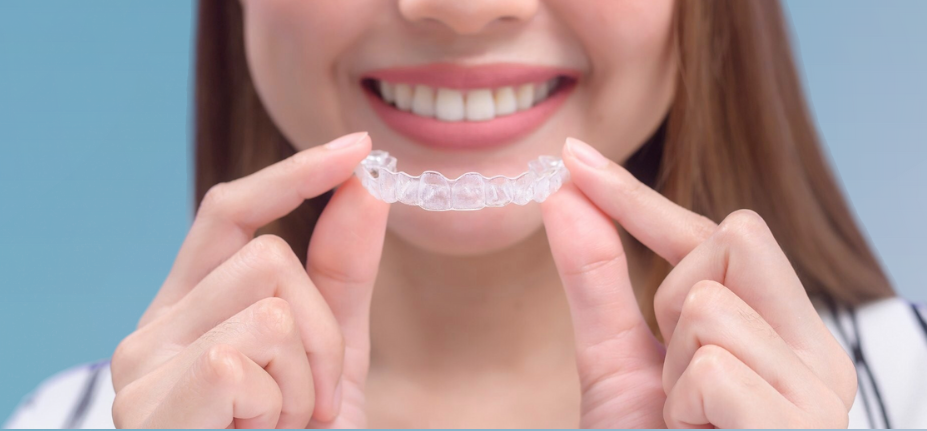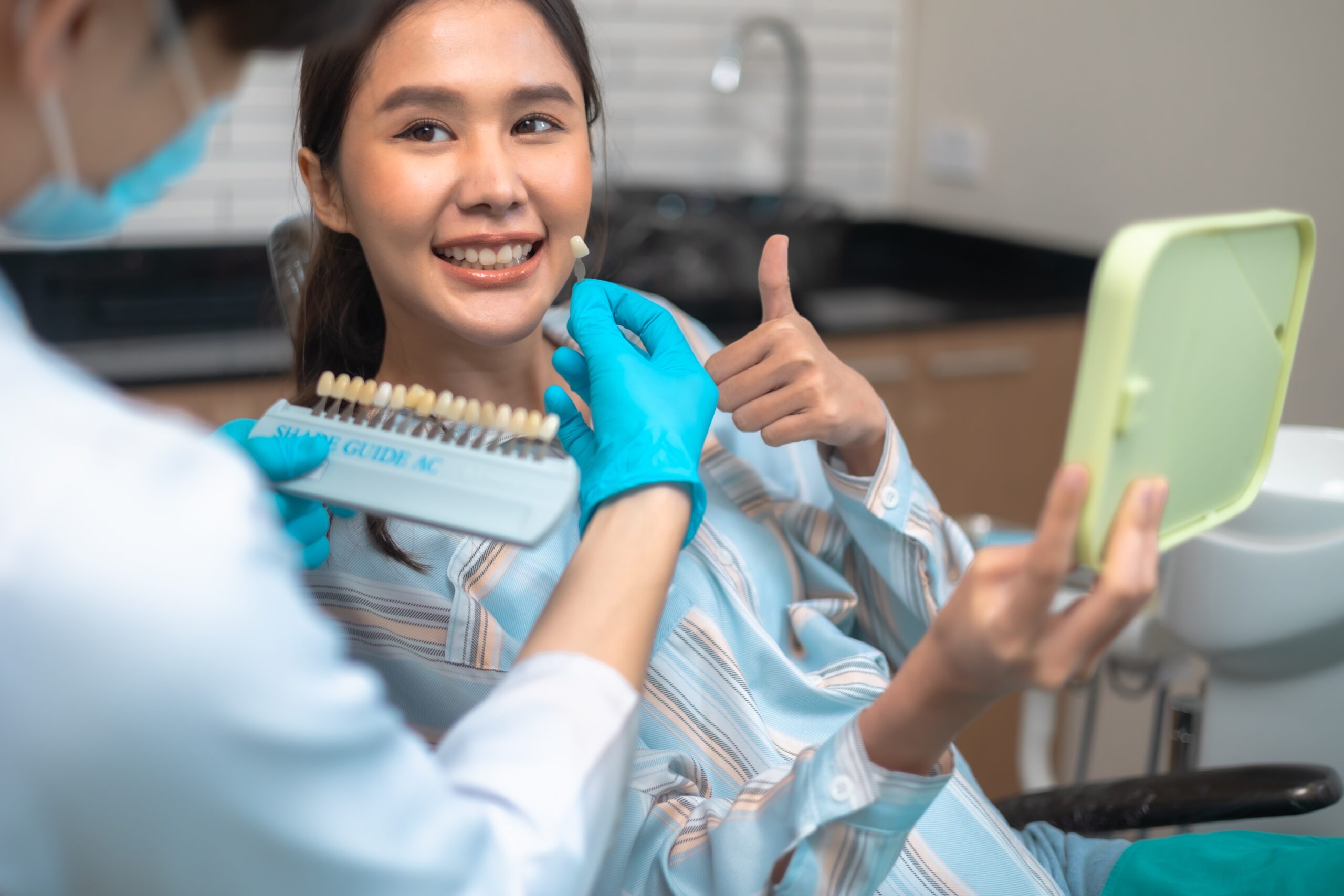Looking to straighten your teeth without drawing attention to it? Clear aligners have become a popular option in Singapore for those who want a more comfortable and discreet alternative to braces. Whether you’re exploring aligners for the first time or simply curious about how they work, this guide covers everything you need to know—from the treatment process to what to expect after getting your aligners.
///
How Do Clear Aligners Work?
Clear aligners work by gently shifting your teeth over time. Each aligner tray is slightly different from the one before it, applying just the right amount of pressure to move your teeth little by little into a straighter position.
You’ll typically wear each set of aligners for about 1–2 weeks before switching to the next one in the series. Over the course of several months, this gradual process helps improve the alignment of your teeth and bite.
Our dentists at Brightside play a key role throughout your teeth aligner journey. From your initial consultation to regular check-ins, they’ll make sure your teeth are moving safely and according to plan. If anything needs adjusting along the way, they’ll guide you through it.
///
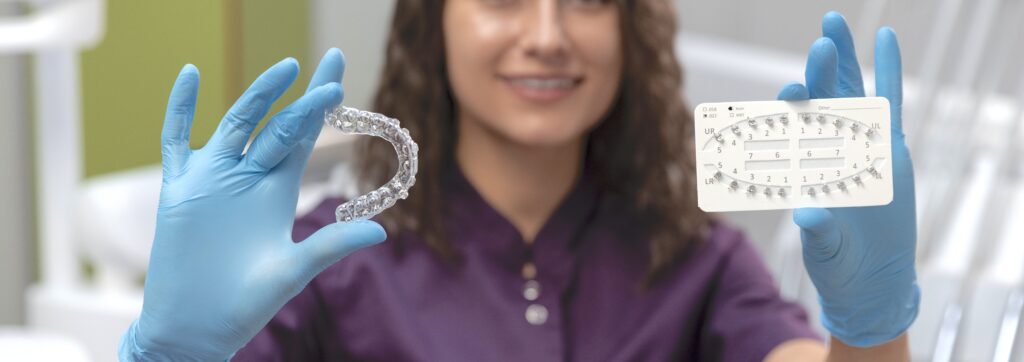
///
Why Aligners?
Compared to traditional braces, clear aligners are:
- Removable, which makes eating and brushing much easier
- Nearly invisible, so most people won’t notice you’re wearing them
- Custom-made, using digital scans of your teeth for a snug fit
///
Braces are still a great option for more complex cases, but many patients prefer aligners for their flexibility and comfort—especially if they’re looking for a low-profile way to straighten their teeth.
///
Direct-to-Consumer Aligners vs. Clinician Controlled Aligners
If you’re looking at aligners in Singapore, you may come across two main options: Direct-to-Consumer (DTC) Aligners and Clinician-Controlled Aligners. While both are clear aligners aimed at straightening your teeth, they differ in approach, supervision, and effectiveness.
| DTC Aligners | Clinician-Controlled Aligners |
| These are ordered online, and you’ll have to take your impressions or scans at a partner clinic. Your scans are then reviewed remotely by a member of staff of the company or a hired dentist, with minimal dental supervision along the way. | These are provided by licensed dentists. Clinician-Controlled Aligners involve professional scans, customized treatment plans, and regular check-ups in person at the dental clinic. |
| DTC Aligners tend to follow a pre-set treatment plan, with limited ability to modify the aligners based on real-time changes in tooth movement. | Treatment can be adjusted as needed during physical appointments, ensuring the best fit and results. |
| While this option is more affordable, it’s only suitable for mild cases and comes with higher risks of misalignment or oral health issues. | Although higher in price, this option tend to be safer, more precise, and can treat both simple and complex cases. |
DTC aligners might seem appealing due to heavy marketing on social media and lower cost, but it might not be the best choice if you prioritize effectiveness and long-term results since you won’t have the in-person guidance of a dentist to monitor your progress and make necessary adjustments halfway through treatment. Instead, braces can be a more cost-effective alternative without compromising on effectiveness or professional supervision.
///

///
Key Factors to Consider When Choosing an Aligner
Choosing the right aligner isn’t just about picking the most popular brand—it’s a decision that’s usually made together with your dentist, based on your specific needs, goals, and dental condition. So while you can share your preferences, it’s best to rely on your dentist’s clinical judgment to ensure your treatment is safe and effective.
Here are some important things to consider when deciding on an aligner system:
///
Complexity of Your Case
Not all aligners are designed to treat every type of tooth movement. Some are ideal for mild crowding or spacing, while others are built for more complex corrections involving bite alignment or rotated teeth. Your dentist will assess your teeth and recommend a system that’s suited to the level of correction you need.
///
Dentist Supervision & Follow-ups
Clear aligners may be removable, but they’re still part of a medical treatment. Regular dentist check-ins are important to make sure your teeth are moving safely and effectively. Some aligner systems require more frequent monitoring than others, depending on how they’re designed.
///
Material and Comfort
Aligners are made from different types of plastic, and comfort can vary slightly between systems. Some are softer and more flexible, while others are firmer for more controlled movements. If you have sensitive gums or teeth, this may be something to consider.
///
Treatment Time & Lifestyle Fit
Your daily routine matters too. Most aligners need to be worn 20 to 22 hours a day, so commitment is key. If you travel often, have an irregular schedule, or prefer fewer dental visits, your dentist might suggest an option that fits better with your lifestyle and timeline.
///
Cost
Aligner treatment costs can vary depending on the brand, length of treatment, and your dental condition. A good clinic will be upfront about what’s included, whether it’s the number of trays, check-ups, or retainers after treatment. Always make sure you understand the full breakdown before starting.
///
At the end of the day, aligner treatment is not one-size-fits-all. What works for someone else might not be right for you—which is why having an honest, informed discussion with your dentist is the best place to start.
///
The Aligners Treatment Process
While the exact steps may vary slightly between dental clinics, most aligner journeys in Singapore follow a similar path—from consultation to post-treatment care.
Here’s a general look at what you can expect:
///
1. Initial Consultation & Eligibility
Your journey begins with a consultation. During this visit, the dentist will examine your teeth, ask about your concerns, and determine whether aligners are a suitable option for your case.
At Brightside, we take a step further and look at your smile with harmony in mind. Our aligner treatment focuses on facial aesthetics, ensuring that your final teeth position enhances your natural features, such as the fullness of your lips, the width of your nose, and overall facial balance.
This is also the time to ask questions, understand your options, and get a sense of how long your treatment might take.
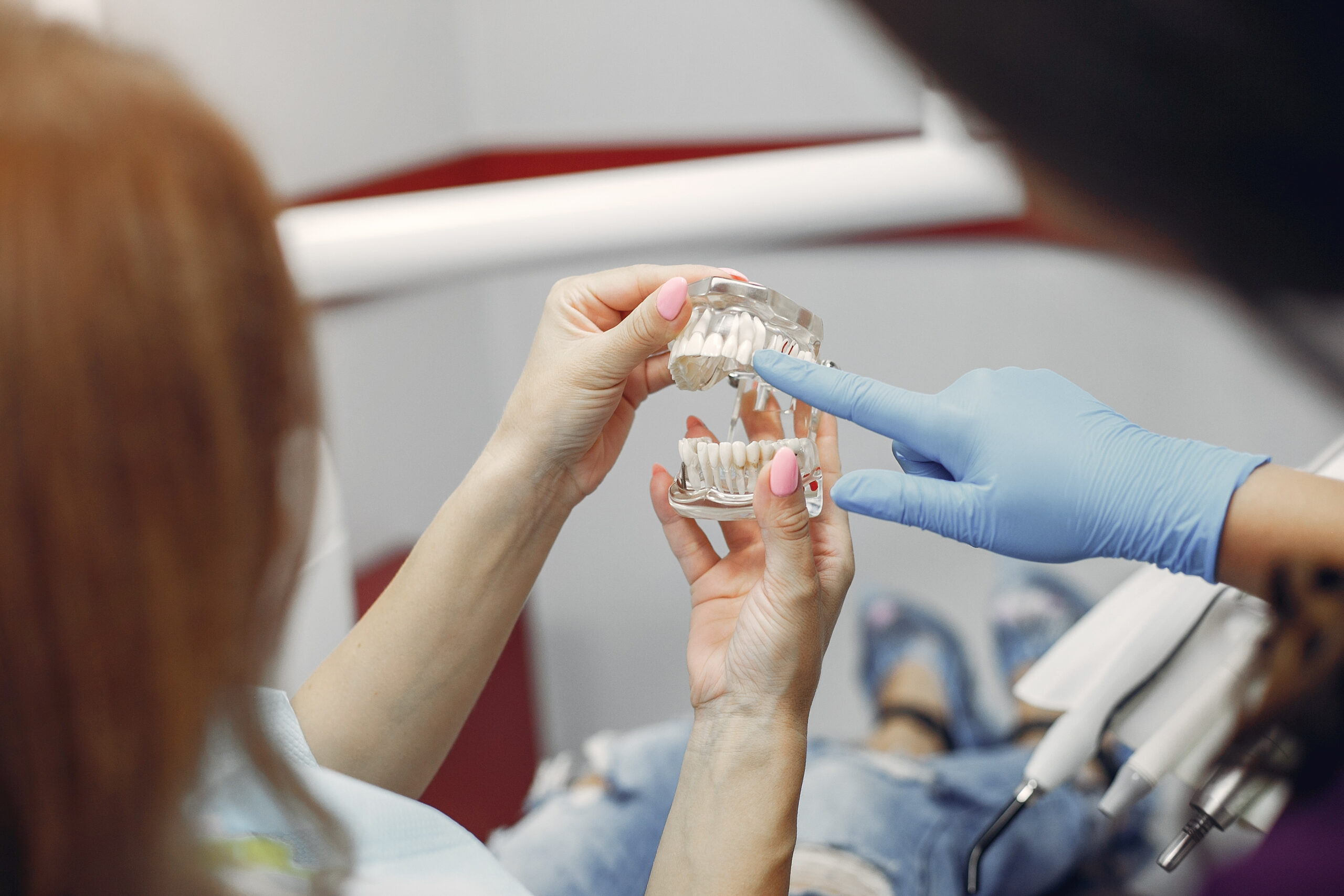
///
2. Digital Scans / X-rays
If you’re eligible for aligners, the next step usually involves taking detailed images of your teeth. Most clinics use digital scans and sometimes X-rays to get a full picture of your smile.
These scans are quick, non-invasive, and help create an accurate 3D model of your teeth—no goopy moulds needed!
///
3. Treatment Plan & Custom Aligner Trays
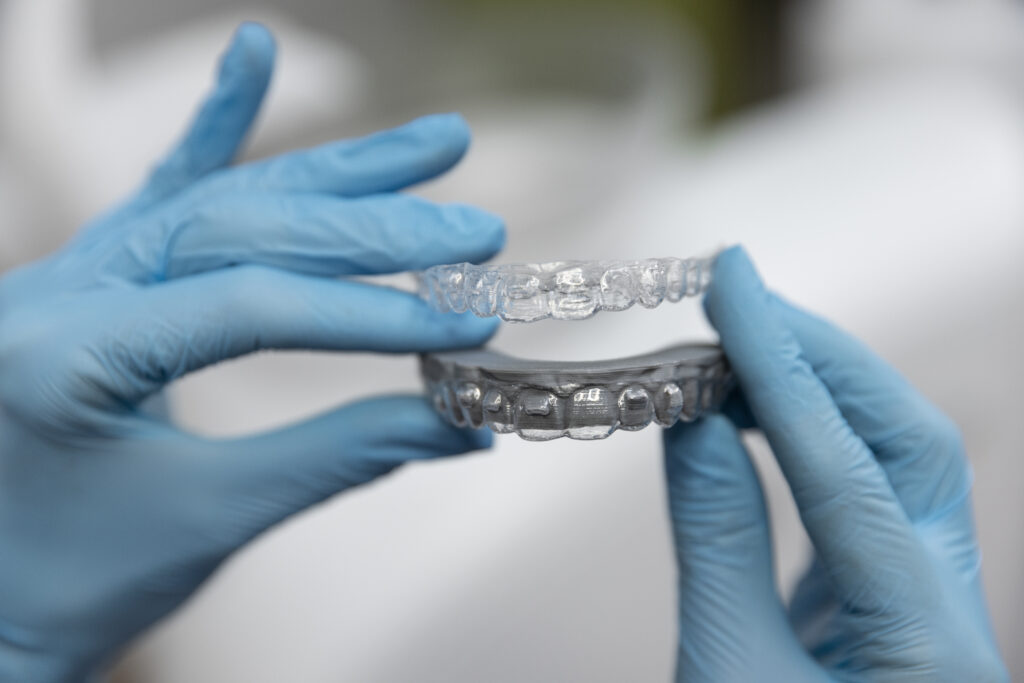
Based on your scans, the dentist will map out a custom treatment plan showing how your teeth are expected to move over time.
Once the plan is approved, your custom-made aligner trays will be created. Each tray is slightly different and designed to guide your teeth into better alignment step by step.
///
4. Fitting, Monitoring & Refinement
Once your aligners are ready, you’ll return to the clinic to have your first set fitted. Your dentist will show you how to wear and care for them—and make sure they fit comfortably.
At Brightside, we carefully polish and smoothen these attachments to ensure an optimal fit and minimize the risk of staining, which often occurs with rough edges.
Throughout the treatment, you’ll come in for regular check-ups to monitor your progress. In some cases, your dentist may recommend refinements—extra trays to fine-tune your results.
///
5. Post-Treatment Retainers
Once your aligner treatment is complete and your teeth are in their new positions, you’ll likely be given retainers to wear.
Retainers help maintain your results and prevent your teeth from shifting back over time. Your dentist will guide you on how long you’ll need to wear them and how to take care of them.
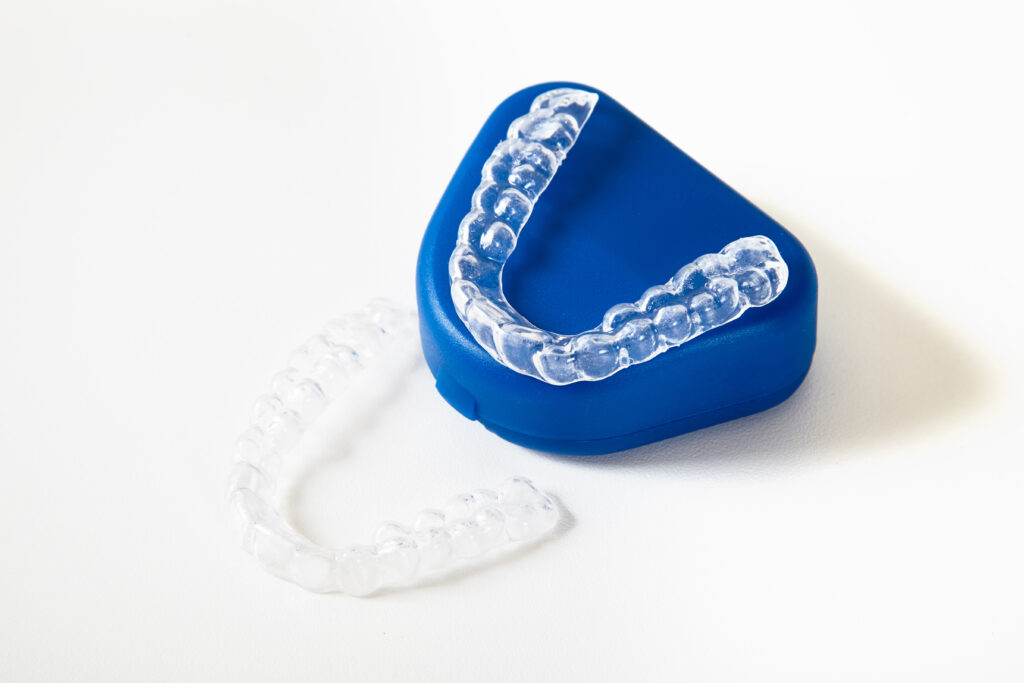
///
Cost of Aligners in Singapore
The cost of clear aligner treatment in Singapore typically ranges from around $2,000 to over $7,000, depending on your individual needs.
This price can vary based on several factors, such as complexity of your case, the number of aligner trays required, how often follow-up appointments are needed and et cetera.
Brightside offers a variety of aligner systems to suit different budgets. Our team will recommend an ideal treatment for your needs, and never push for a more expensive option unnecessarily.
As a bonus, clear aligners can often double up as trays for take-home teeth whitening—making them a versatile option beyond just straightening teeth. Since every smile is unique, the most accurate way to determine your total treatment cost is through a personalised consultation with a dentist. This allows your dental team to assess your teeth, recommend a suitable plan, and explain what’s included—so you can make an informed decision with confidence.
///
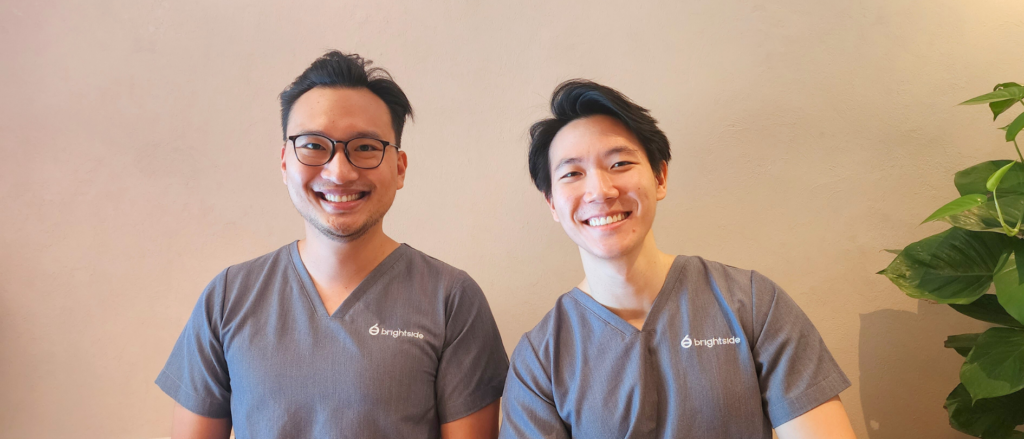
Conclusion
Clear aligners have become a popular and effective option for individuals looking to improve their smile in a discreet and comfortable way. From understanding how aligners work to knowing what factors influence cost and treatment success, it’s clear that professional guidance plays a crucial role at every stage.
If you’re considering aligners, the first step is to learn more about your suitability through a consultation with a licensed dentist. While aligners offer flexibility and convenience, the best outcomes come from a personalised approach tailored to your dental needs. For more information on our services, feel free to reach out to our clinic.
